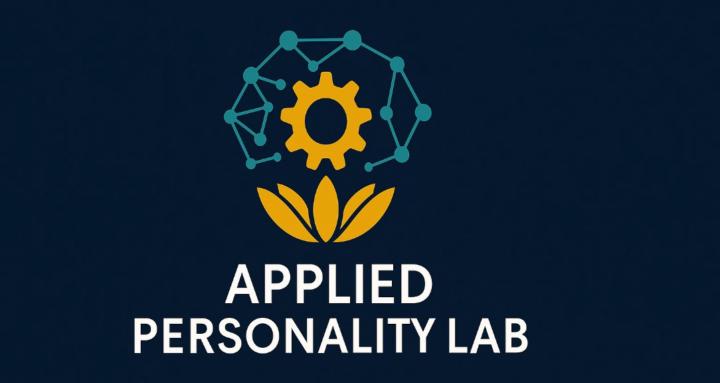Aug 30 • PRISM
Behavior snapshots ≠ decision systems: why most “brain→behavior” profiles stall at now what? (and what my PRISM fixes)
A lot of popular profiles map observable behavior (sometimes with neuro-flavored marketing), but don’t model a person’s core identity or valued preferences—so they can’t reliably tell you what to do next. I’m building PRISM: a Socionics-rooted, trait-plus-state model with a stable identity layer and a small set of state modes that explain when/why you “look like” other styles. The goal is decision support, not just descriptions. Would love critical feedback on the psychometrics.
The critique (aimed at behavior-snapshot systems)
1. No latent identity. They treat today’s expression as the ground truth. That’s volatile and context-dependent.
2. No value function. Without modeling what the person cares about, you can’t rank choices; advice stays generic.
3. No state mechanics. Stress/time pressure/social demand change expression, but most tools don’t model the how/why—they just describe it after the fact.
4. Result: great language, weak decision utility. You get “you’re high in X today,” but not a policy for what to do in this situation.
⸻
What PRISM does differently (system design, not hype)
• Identity (stable): 8 continuous function traits (Te, Ti, Fe, Fi, Se, Si, Ne, Ni) + valued preferences (which pairs you elevate under choice/pressure).
• State (situational): 3–4 compact modes (e.g., arousal × orientation) that apply gain patterns to the identity vector—predicting how expression shifts.
• Lookalikes (derived, not reassigned): In certain modes, your expression may sit closer to another type centroid (e.g., an LIE presenting ILI-ish in a low-arousal, abstract mode). That’s shown as proximity, never as a new identity.
Decision grammar (what users actually get):
\pi(I, V, M, X) \rightarrow \text{policy}
Where I = identity (traits), V = valued preferences, M = current mode, X = context (stakes, audience, time horizon). Output = ordered moves, guardrails, and a 2–3 step reset for that situation.
Example:
• Mode: high-arousal × relational → boost Fe/Ne; Do: socialize the “why”, offer two options, close fast. Don’t: Ti rabbit holes. Reset: brief Si grounding (timebox + environment tweak).
⸻
Why I think this has more integrity
• Stability where it belongs: identity shows retest stability;
• Flexibility where it’s real: states explain predictable variance.
• Transparency: every bar has a confidence band and a response-quality index; “apparent lookalikes” are labeled as such (no retyping whiplash).
• Claims ladder: psychometrics → predictive outcomes → (later) cautious neuro links. No hemisphere myths, no causal brain claims without preregistered data.
⸻
Evidence plan (and where I want pushback)
1. Reliability & structure: α/ω ≥ .80 per function; EFA→CFA for 8 separable factors.
2. Test–retest: r ≥ .70 (2–4 weeks) for identity scales.
3. State sensitivity: planned contrasts show predicted mode gains (e.g., Mode “Visioning” boosts Ni/Ti) with medium effects.
4. Incremental validity: PRISM adds ΔR² over Big Five on pre-registered decision scenarios (conflict approach, planning horizon, negotiation frame, creative pivot).
5. Fairness: multi-group invariance (configural/metric/scalar); item-level DIF pruning.
6. Scoring hygiene: normative Likert + (optional) ipsative blocks scored with Thurstonian IRT to avoid ipsative artifacts.
⸻
What I’m not doing (yet)
• No “brain region X = behavior Y” claims.
• No fixed subtype musical chairs. Identity stays put; modes explain presentation shifts.
⸻
What I’m asking this sub for
• Psychometrics: holes in the plan? Better ways to separate identity vs state variance (bi-factor vs hierarchical IRT)?
• Validity: favorite decision-scenario paradigms I should adopt or preregister?
• Fairness: recommended invariance/DIF workflows across culture/sex/age bands?
• Reporting: best practices for showing uncertainty and “apparent proximity” without inducing retyping.
I don’t have the full calculations or the manifesto pasted here (it’s lengthy), but I can share them for anyone who wants to review the technical spec and tear it apart. I’m specifically looking for failure modes I haven’t considered and minimal proofs that would convince a skeptical methods person.
Thanks in advance for the critique—especially from folks in psychometrics, personality theory, decision science, or anyone who’s fought with ipsative scoring and invariance in applied tools.
1
2 comments

skool.com/psychology-enthusiasts-9404
Turn self-knowledge into clearer performance and conversations in 7 days or less.
Powered by



